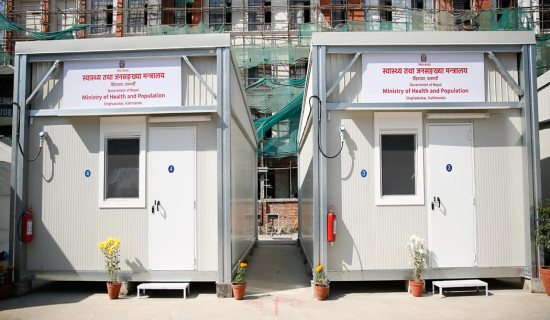- Tuesday, 9 December 2025
‘Ningyo: Art and Beauty of Japanese Dolls’ on display
Kathmandu, Dec. 9: The travelling exhibition ‘Ningyo: Art and Beauty of Japanese Dolls’ is currently on display at the Nepal Art Council in Babarmahal, Kathmandu.
This is the first time the Embassy of Japan and the Japan Foundation have jointly organised a Japanese Dolls exhibition in Nepal. Previously, they had organised different forms of Japanese art in Nepal. The exhibition, which began on December 7 will continue until December 21.
The primary objective of the exhibition, as stated by the Japan Foundation, is to introduce and promote Japanese culture in Nepal. The dolls hold significant cultural importance, embodying prayers and expressions of love in Japan.
The exhibition highlights a comprehensive introduction to Japanese doll culture, from the archetypes to local dolls.
Titled ‘Ningyo’, meaning ‘human shape’ in Japanese, the exhibition showcases 67 carefully selected dolls, divided into four sections, each with symbolic meanings and the rich Japanese culture behind each. These sections include Ningyo for praying for children’s growth, Ningyo as fine art, Ningyo as folk art, and the spread of Ningyo culture.
Yutaka Kikuta, Ambassador of Japan to Nepal, addressed the inaugural exhibition on Thursday and expressed the importance of doll culture in Japan and its significance to Japanese people.
Mayuko Sato, Cultural Secretary of the Embassy of Japan, said that the main goal of the exhibition was to spread Japanese culture and language in Nepal.
She explained that in ancient times, dolls were used for prayers, such as wishing for the good health and growth of children, and over time, they evolved into a form of art and now dolls have become an integral part of Japanese culture. Visitors have the opportunity to immerse themselves in the rich and insightful world of the doll culture of Japan through an engaging exhibition in Kathmandu.
The display features a diverse array of dolls, ranging from those traditionally used to pray for the health of babies to toys and those employed in performance art and many more, showcasing various aspects of Japanese culture.








-square-thumb.jpg)








